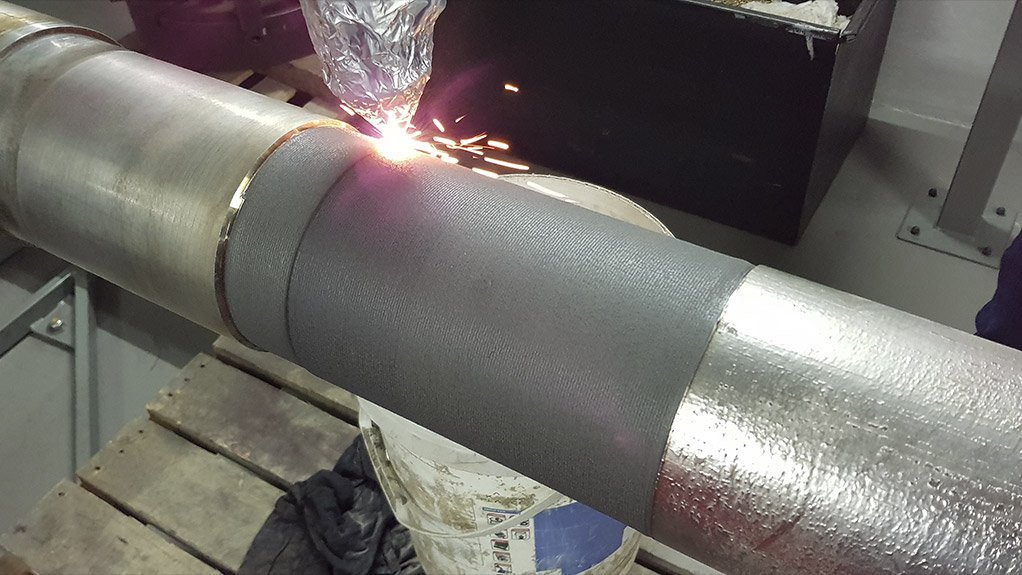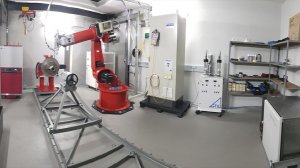Coating technology specialist Thermaspray has recently launched and installed its new laser cladding system, which has broadened the scope of the industries it serves.
The laser cladding system was launched at the Thermaspray facility in Olifantsfontein, in Gauteng, South Africa.
The overlays produced using laser cladding provide a metallurgical bond, which makes the surface of components invulnerable to cracking or delaminating on impact.
Thermaspray laser cladding manager Jordaan Lourens explains that this is where laser cladding differs from thermal spray technology, as thermal sprayed coatings do not defend well against cracking or delaminating on impact.
He adds that laser cladding does not replace thermal spraying, but rather that different materials are specifically manufactured for different applications to withstand, for example, corrosion or water damage, and these materials are either applied using laser cladding or thermal spraying.
Lourens says the laser cladding system and method has to meet certain local standards and regulations that comply with European standards.
Therefore, a booth was specifically designed to cater for large components and was built specifically for the laser at the Olifantsfontein facility.
“This, however, means that we are unable to do on-site laser cladding and all processes need to take place at our facility.”
Lourens tells Engineering News that laser cladding offers a number of benefits to industries such as pumps and valves, power generation, offshore oil and gas, mining, agriculture and automotive.
“In the mining industry, components – specifically those used in drilling and excavating that come into contact with sand and rocks – are subjected to severe abrasion. Cladding can, therefore, be used to refurbish and protect the surfaces of these components.”
Lourens adds that there has been significant interest and demand for laser cladding in power generation and in the pumps and valves industry and, because of laser cladding’s precise technology, it can be used to refurbish complex geometry and blade edges.
Laser cladding also extends to applications such as shaft repairs. In traditional welding processes, such as metal inert gas welding, tungsten inert gas welding and plasma-transferred arc welding, a lot of heat is placed into the substrate material of the component, often causing the component to distort and bend beyond repair.
“As laser cladding forms part of the welding process family, we have a technician who is a Level 1 inspector, certified by the Southern African Institute of Welding and who is a Red Seal welder thus emphasising the standard and quality of work that Thermaspray does.”
Thermaspray has also been awarded ISO 3834-2 certification, proving to clients that the company is dedicated to providing services of the highest standards, Lourens concludes.
Edited by: Zandile Mavuso
Creamer Media Senior Deputy Editor: Features
EMAIL THIS ARTICLE SAVE THIS ARTICLE
ARTICLE ENQUIRY
To subscribe email subscriptions@creamermedia.co.za or click here
To advertise email advertising@creamermedia.co.za or click here















